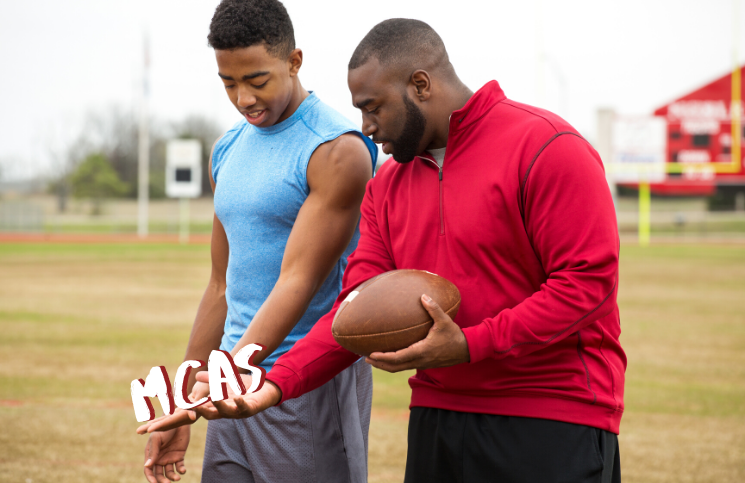Spring MCAS tests just around the corner.
by Joan Reissman, MCAS Maven
Mid-Winter Spring ELA MCAS
We’ve hardly had a winter, but Spring MCAS tests will be here before you know it. It’s time to start preparing.
There will be two ELA test administrations in March, first the retest and then the regular Spring test. The ELA retests (Composition and Reading Comprehension) start March 2 and go to March 5. They will be the traditional paper version based on the structure of the old Legacy test. That means separate Composition and Reading Comprehension sessions. The Reading Comp sections include multiple choice and constructed response items. Three weeks later, March 24 and 25, students will be taking the new ELA test. This test will be computer based and follow the guidelines for Next-Generation MCAS 2.0.
The retest is for students who took a previous Spring test but need to raise their score to 472 (240 Legacy) to reach the “Meets Expectations” level, or 455-471 (220-239 Legacy) with an EPP plan. Students cannot take the Next-Generation 2.0 test if they were reported on any previous Spring MCAS roster in Math or English. They will be considered “counted” even if they were only reported in one of the “Not Tested” categories. If you’re a student, your school administrators will be able to explain all this and tell you which test you are eligible to take.
To prepare for the retest you can practice with archived tests. The retest is the same format and content as the old Legacy test. There are plenty of previous years’ tests for practice. You will have a separate composition section, so be prepared for the long composition with some memorized examples of text that you have read. The best way to study would be to start with the 2018 test and work backwards.
The so-called “regular administration” tests beginning March 24 are the new Next Generation 2.0 test. This year’s students will have an advantage because they have two computer-based tests to work with: a practice test and the actual Spring 2019 test. Students who have been in Massachusetts school systems will also have the advantage of having taken a computer-based ELA test in 8th grade. The format of the 8th grade test is very similar to the 10th grade test. Now that we have seen the actual 10th grade test in 2019, we can see the similarities between the 8th and 10th grade tests. They both use the same type of text comparisons, constructed response questions, and technology-enhanced items.
Even though students are familiar with computer test- taking and may have taken a similar test, don’t assume they will be comfortable with technology-enhanced items. Ninth graders in Biology or Physics only took a field-based computer test last year. Since it didn’t count, many students might not have taken it very seriously. That’s why it’s important for teachers to make sure that students review the test format. Some students will need more practice with the format and technology-enhanced items. There is only one practice test and one actual test, so I recommend that students practice with the DESE tutorial. Go to Pearson Support and go through the TestNav8 student tutorial. Students will be able to practice moving through the test and making use of test tools such as notepad, line reader mask, highlighter and answer eliminator. These tools are particularly useful in the ELA test because they can sharpen focus and comprehension in reading. The TestNav tutorial also gives students practice with technology-enhanced items. Students must be familiar with all of the technology-enhanced formats. To get the best scores, they must be comfortable with these types of questions. They need to save their mental energy for coming up with the answers, not waste it wrestling with the format. TestNav will give students practice answering multiple-select, drag and drop, fill in the blank, and typing answers in the response box (for constructed response). Teachers can do this tutorial in class with their students or assign it for homework.
This year’s test takers will have a big advantage over last year’s because they have a real test, last year’s, to examine.The major differences in the 2019 test were format, technology-enhanced items, text comparisons and the elimination of the long composition section. For a detailed analysis of the differences between the 2018 and 2019 MCAS tests, look at JFY’s webinar Understand the Changes in the ELA Next-Gen MCAS 2.0 and our upcoming webinar on How to Prepare for the 2020 ELA test.
What are the most important things a teacher can do to help students get ready for this year’s MCAS? Besides preparing for technology-enhanced items, the 2019 test showed us that there will be much greater emphasis on comparing texts. There has been a section comparing two texts since 2015, but in 2019 comparing texts represented a much higher proportion of the questions. There were 13 multiple choice or technology-enhanced questions and 2 essays which asked students to compare up to three texts. This represents a 35% percent increase from 2018. Give your students plenty of practice in making comparisons. Help them develop strategies they can use on the MCAS. For example, they can use the highlighter tool in the test to mark important ideas. They can use the notepad to draw a chart or jot down comparisons. Students should practice toggling between texts on one of the lower grade tests. Remind them that if they are uncomfortable using the notepad or computer highlighter, they are entitled to be given scrap paper or a whiteboard. They can have up to three sheets of paper at one time as long as they turn everything in at the end of the testing session. Make sure your students know what strategies work best for them and have a game plan worked out for what strategies they will use before test day. Have them practice these strategies so that they become automatic. Test day should run on muscle memory.

So what’s your game plan? Think like a coach and train like you’re preparing for the Super Bowl. Keep in mind your practice options and focus on what’s most important. Focus on test tools and navigation, technology-enhanced items and comparing texts. Start with the TestNav tutorial and then try the practice tests. You may want to start with the 8th grade tests. There is a practice test and 3 previous 8th grade tests found here.
Once students are comfortable with the format, teachers can have them do practice tests as a class. Take at least one test and simulate the testing environment. This practice will be very helpful to students. Don’t forget to work on comparing texts. Strategies for comparing texts are easy to integrate into your daily instruction. Whatever you are teaching, you can always have students think about comparing one text to another. Practice comparing fiction and non-fiction. Remember, strategy is more important than genre.
Practice, practice, practice. If students work on these basic elements, they’re bound to get good results. Having a strategic plan and mastering the formats and tools are the keys. Students will feel confident when they take the MCAS and their scores will reflect their hard work.
Good luck!
Joan Reissman, the MCAS Maven, has been advising students and teachers on learning strategies since 2000.
Additional MCAS Maven posts found here.
HOW ARE WE DOING? In our pursuit to serve up content that matters to you, we ask that you take a couple of minutes to let us know how we’re doing? Please click here to be navigated to our JFYNet Satisfaction Survey. Thank you!





